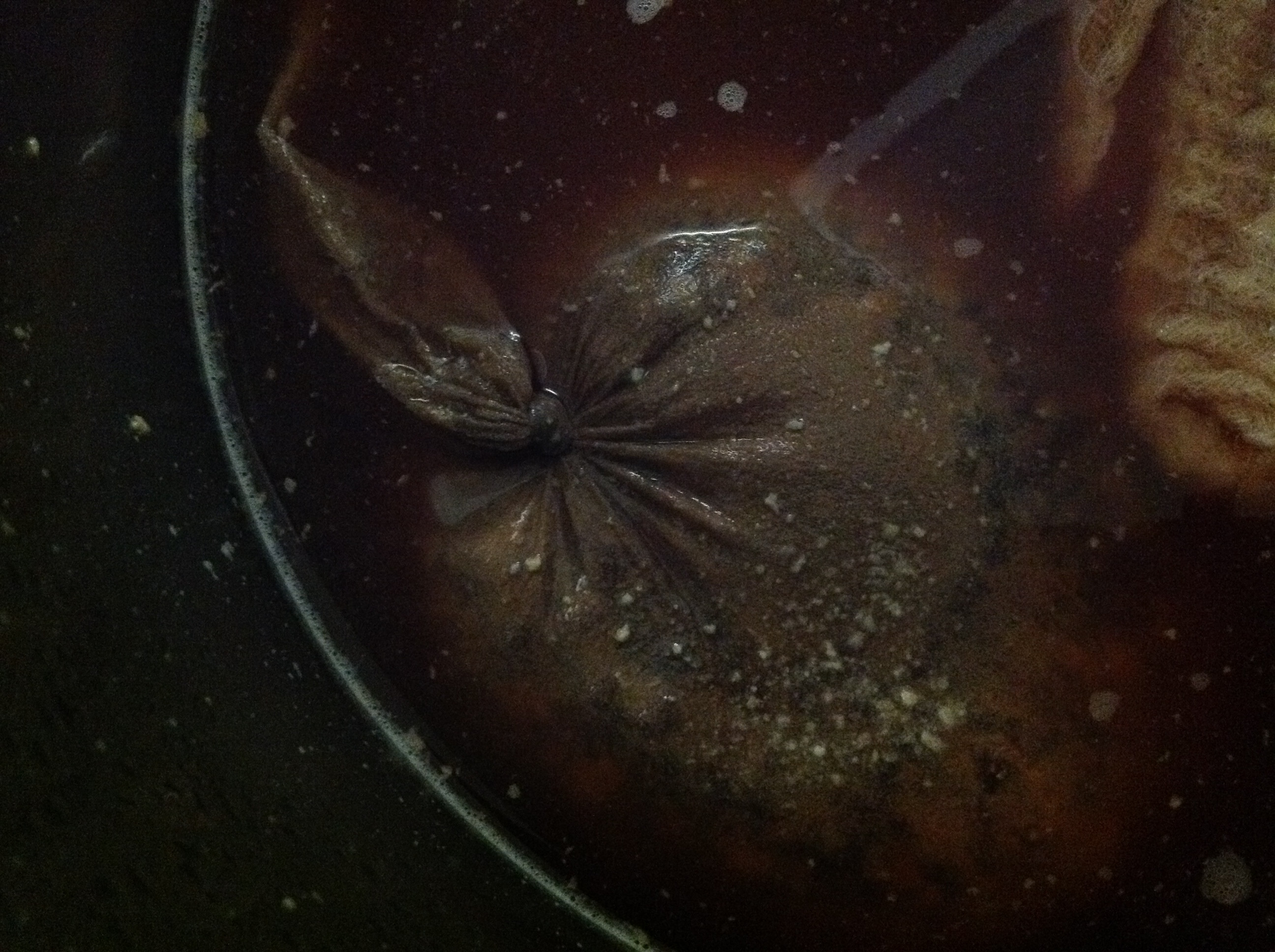I am currently making a chokecherry raspberry wine and encountered some odd fermentation, was wondering if this is just yeast or if it this is mold? Been about a week since pitched, when stirred it showed a lot of the same clumsiness which makes me think it is just yeast. Tastes and smells great so far, but wanted some other opinions


**recipe** Used some raspberry instead of all chokecherry.
2.5 to 3 lbs ripe chokecherries
1 can (11oz) Old Orchard Frozen 100% Apple/Cherry juice
1.75 lbs granulated sugar Starting SG 1.080 - 1.095
1 tsp acid blend (or test and add acid to .60TA)
½ tsp pectic enzyme
Water to 1 gallon
1 crushed Campden tablet
1 tsp yeast nutrient
wine yeast - Premier Cuvee
Later:
1 crushed campden
½ tsp Potassium Sorbate
METHOD:
1.Destem and sort berries, discarding any bruised fruit. Put fruit in the freezer for approx five days. Freezing them will help release the juice in the berries. You do not have to destone chokecherries, just don't crush or break the pits. Breaking the pits even a small amout can produce a more than normal bitter flavor in the wine.
2. Put thawed berries in fine nylon straining bag, tie the top and place in primary. Use gloved hands or large potato masher to crush the chokecherries being very careful to only crush the berries and not break any of the pits.
3. Put 1/2 gallon of water on to boil. Once boiling stir in the sugar and dissolve completely, then remove from burner and pour over the chokecherries in the primary.
4. Cover primary and wait 2-3 hours to set the color, then add the Old Orchard juice if using it and the rest of the water. Then allow it to sit till cool. The liquid level should equal about 2 to 3 cups above the 1 gallon mark on your fermenter to make up for the berries and bag.
5. When cooled to room temp stir in all remaining ingredients except pectic enzyme and yeast. Take an SG reading and confirm it is between 1.080 1.095. If it requires adjustment then adjust by either adding sugar syrup, or water. If you have an acid test kit, test must and adjust acid to .60 TA. Cover and leave for 12 hours.
6. After the 12 hours add the pectic enzyme, recover and leave another 12 hours.
7. After the second 12 hours open primary and sprinkle the yeast on top of the must and recover.
8. Push the bag of fruit under the liquid 2 twice daily to extract juice and to keep the fruit wet.
**


**recipe** Used some raspberry instead of all chokecherry.
2.5 to 3 lbs ripe chokecherries
1 can (11oz) Old Orchard Frozen 100% Apple/Cherry juice
1.75 lbs granulated sugar Starting SG 1.080 - 1.095
1 tsp acid blend (or test and add acid to .60TA)
½ tsp pectic enzyme
Water to 1 gallon
1 crushed Campden tablet
1 tsp yeast nutrient
wine yeast - Premier Cuvee
Later:
1 crushed campden
½ tsp Potassium Sorbate
METHOD:
1.Destem and sort berries, discarding any bruised fruit. Put fruit in the freezer for approx five days. Freezing them will help release the juice in the berries. You do not have to destone chokecherries, just don't crush or break the pits. Breaking the pits even a small amout can produce a more than normal bitter flavor in the wine.
2. Put thawed berries in fine nylon straining bag, tie the top and place in primary. Use gloved hands or large potato masher to crush the chokecherries being very careful to only crush the berries and not break any of the pits.
3. Put 1/2 gallon of water on to boil. Once boiling stir in the sugar and dissolve completely, then remove from burner and pour over the chokecherries in the primary.
4. Cover primary and wait 2-3 hours to set the color, then add the Old Orchard juice if using it and the rest of the water. Then allow it to sit till cool. The liquid level should equal about 2 to 3 cups above the 1 gallon mark on your fermenter to make up for the berries and bag.
5. When cooled to room temp stir in all remaining ingredients except pectic enzyme and yeast. Take an SG reading and confirm it is between 1.080 1.095. If it requires adjustment then adjust by either adding sugar syrup, or water. If you have an acid test kit, test must and adjust acid to .60 TA. Cover and leave for 12 hours.
6. After the 12 hours add the pectic enzyme, recover and leave another 12 hours.
7. After the second 12 hours open primary and sprinkle the yeast on top of the must and recover.
8. Push the bag of fruit under the liquid 2 twice daily to extract juice and to keep the fruit wet.
**


